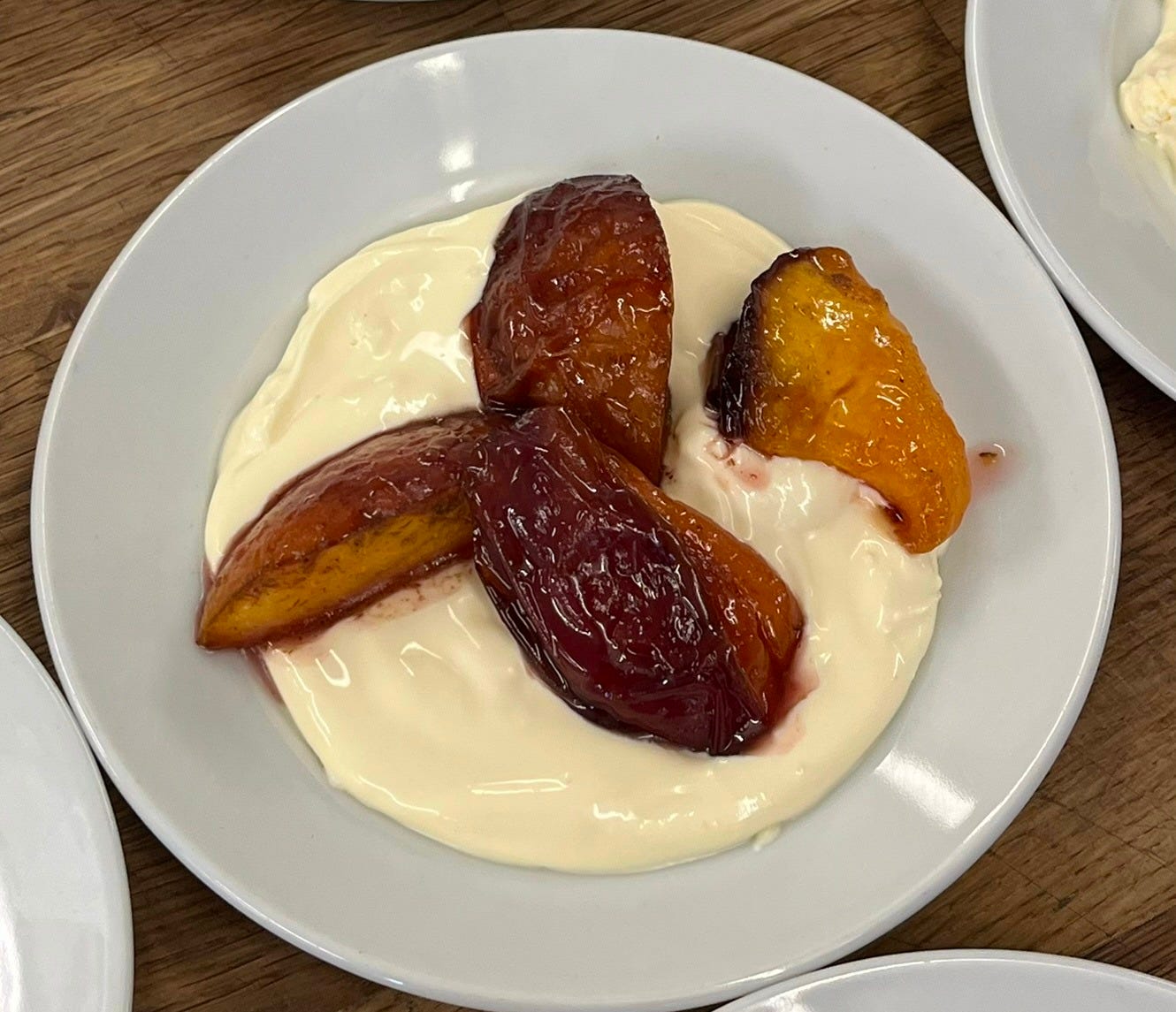
Posset sounds like an affectionate form of address (see poppet*) or a small, sharp-toothed animal. I can imagine a posset curling its way into a rabbit’s warren, emerging later, triumphant, bouncy quarry between its teeth, soft fur now slick with blood, stuck with soil. But that would be a ferret. A posset (possot, poshote, possyt or poshotte) was once a medieval English dish of milk curdled with ale or wine and often spiced, with nutmeg or mace, and drank for pleasure, yes, but for its curative nature most.
(*poppet, a term of endearment, originally referred to a doll used in British witchcraft, upon which the ‘voodoo doll’ is probably based. The ‘voodoo doll’ is not commonly used in African diasporic religions, and is not a part of Haitian Vodou or Louisiana Voodoo, and sprung from, especially, 20th century American media)
It was rich and thick, imbued with the strength of cow and Bacchus both, and so this strength would be absorbed by the sickly drinker. Medieval medicine is often like this, a sort of dumb poetic transference of one thing into another, simple, often comic, sometimes right. Such possets were fashionable until the 17th century, and were served in small pots - like teapots - with a spout and two handles, often lushly decorated.
As time goes on, fancy changes, experiments take place, eggs are sometimes added and new spices used. In an 18thc recipe, the posset resembles a sweetened cottage cheese, closer to and at the same time, infinitely far from today’s lemon posset. Fancy changes further, as does the readily available use of lemons, and the lemon posset is born - a thick dessert, silkier and lighter than custard, softer than panna cotta. It goes in and out of fashion, though it has always assumed a niche akin to the syllabub, rather than the ubiquity of custard, an English dessert with the greatest accolade: a French name, crème anglaise.
I think this is probably the case because a posset must be served cool to be set, whereas custard can achieve greater thickness while warm. Custard, also, can be made more cheaply - a couple of eggs, some milk; or bastardised with corn starch, it can be made with only milk and powder, lending itself to industrial food, greater cheapness, greater ubiquity. Posset, on the other hand, requires cream - expensive, short shelf life.
Apparently, if a rash of articles from the 2020s are to be believed, it has enjoyed a revival in the United States, though I do not remember anyone talking about posset in England. Still, from my little research, I’ve found that posset recipes contain little innovation - flavoured only occasionally with anything but lemon, served in glasses or pots (a presentation I hat: at once clumsy and prissy) and paying no attention to cream’s most interesting quality, how readily it lends itself to infusion. I’m terribly excited (as I have not recently been) to exploit the possibilities of an old dish, as I did when I began making custards a few years ago.
Here is my recipe. If you want no lavender, simply skip step one. And if you experiment with other infusions, do tell me! I’m thinking of a fig-leaf posset next.
Recipe after the pay-wall. Do consider subscribing, for recipes, guides, interviews, and to keep the wolf from my door. Next week I’ll publish my Roman recommendations and an interview with Chris Newans, whose excellent book Moveable Feasts: Paris in 20 Meals has just been released.
Keep reading with a 7-day free trial
Subscribe to Greed to keep reading this post and get 7 days of free access to the full post archives.



